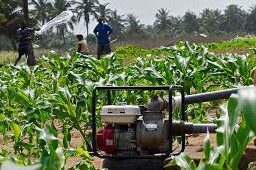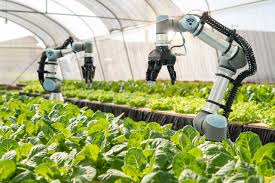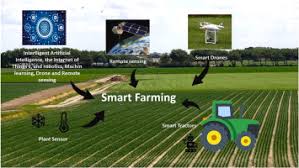In addition to the risk mitigation methods previously discussed, other risk mitigation methods that farmers employ include management alternatives, information, and the adoption of technology. Good management practices can be used to mitigate risk and sometimes prevent the occurrence of risks.
Management Alternatives
There are numerous examples of how risk can be minimized or controlled through improved management practices.
1. Application of Agrochemicals and Fertilizer: The application of chemicals (such as herbicides and pesticides) and fertilizers (organic and inorganic) is aimed at controlling or reducing variability in production.
2. Irrigation: Irrigation is very effective in minimizing the effects of low rainfall or drought.
3. Timeliness of Operations: Timeliness of operations has a significant impact on most production activities. Frequently, the only difference between successful farmers and less successful farmers who engage in the same production enterprises is that the successful farmer is timelier in getting things done.
4. Preventative Maintenance: Practicing preventative maintenance is typical of farmers who effectively manage production risks by minimizing or controlling, as best as possible, the likelihood of negative events occurring. Practicing preventative maintenance and monitoring production activities more closely ensure problems are detected early enough to take corrective measures.
Read Also: Importance and Types of Pets
Good Information About Agricultural Production

Having good and up-to-date information can greatly reduce the risk associated with agricultural production. Agricultural companies, as well as universities, are constantly conducting research to test and develop new and better ways of producing various agricultural commodities. A farmer who is well-informed about and follows new and proven production practices can reduce production risk.
For example, a producer who knows and follows proper care and milking practices on a dairy enterprise can help avoid many diseases, significantly lowering the risk of production loss. Similarly, a crop farmer who becomes aware of a recently emerging crop disease can apply disease-resisting pesticides or plant disease-resistant varieties, potentially saving the crop from devastation.
In Nigeria and other less-developed countries, although information about new technologies or innovations is available at universities and research institutes, farmers often lack access due to ineffective communication between researchers and end-users (the farmers). This problem is rooted in the lack of sufficient extension workers. In Nigeria, for instance, the ratio of extension workers to farmers is 1 to 4,000.
Read Also: Lynx Point Siamese Cat Breed Description and Care Guide
Adoption of New Technology

Adopting new technologies can also help reduce production risk. There are countless opportunities to apply new technology in managing production risk on the farm. This includes physical technology (high-tech), often referred to as precision agriculture. Precision agriculture takes advantage of advances in computers and mechanical engineering to create better, more efficient machines and equipment.
For example, a crop producer who invests in new machinery or irrigation equipment may lower the risk of equipment or water problems reducing yield. Similarly, biotechnology and genetic research focused on improving yield have produced seed varieties that are more resistant to drought and disease, reducing production risk for farmers.
Scientists are developing crop varieties that can withstand environmental stresses such as drought, flood, frost, or extreme temperatures. A related area of research is adapting crops to regions where they are not normally grown due to climate, altitude, or rainfall. Biotechnology is also being used to combat plant pests such as weeds, insects, and diseases.
Animal agriculture is also being affected by biotechnology. Safer and more effective vaccines are already in use. Biotechnology is being used to develop diagnostic tests for a wide range of diseases and viruses.
The key to applying technology in managing risk is to do so in a way that lowers total farm risk. Sometimes, new technology may increase risk, or the increased cost for the corresponding reduction in risk may be prohibitive.
Management practices such as fertilizer and pesticide application, as well as irrigation, are used to reduce the effects of low soil fertility, pest attacks, and low rainfall, respectively. The availability of relevant information at the appropriate time and the adoption of technology are tools that farmers can use to mitigate risk.
Do you have any questions, suggestions, or contributions? If so, please feel free to use the comment box below to share your thoughts. We also encourage you to kindly share this information with others who might benefit from it. Since we can’t reach everyone at once, we truly appreciate your help in spreading the word. Thank you so much for your support and for sharing!
Read Also: Interview Tips for Agriculture-Related Positions

